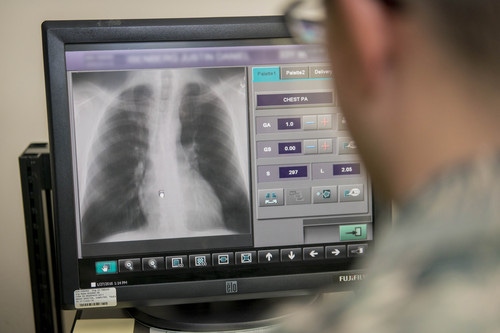The DoD healthcare system is thought to be responsible for one of the world’s largest medical data pools

The DoD is thought to be responsible for one of the world’s largest medical data pools
The Defense Innovation Unit (DIU) of the US Department of Defense (DoD) is aggregating AI technologies and archived medical data to teach computers how to identify cancers.
The “Predictive Heath” project of the DIU involves the Defense Health Agency, the Joint Artificial Intelligence Center (JAIC), and three private sector businesses.
The project aims to develop new tools that medical professionals can use “to more accurately and more quickly identify medical issues in patients.”
“Unique, diverse, and rich data”
A warfighter health initiative of the JAIC, in conjunction with the Defense Health Agency and military services, intends to field AI solutions to transform military health care.
"The JAIC's contributions to this initiative have engendered the strategic development of required infrastructure to enable AI-augmented radiographic and pathologic diagnostic capabilities," said Navy Capt. Hassan Tetteh, the JAIC's Warfighter Health Mission Initiative chief.
"Given the military's unique, diverse, and rich data, this initiative has the potential to compliment other significant military medical advancements to include antisepsis, blood transfusions, and vaccines."
A major part of the Predictive Health project includes training AI systems to analyze medical imagery to identify cancers.
The overall objective is to integrate AI into the DoD healthcare system, according to Nathanael Higgins, the support contractor managing the program for DIU.
"It's going to help drive down cost,” Higgins said. “If you can cut down on the number of acute issues that come up that prevent people from doing their job, you essentially help our warfighting force."
Another objective of the project is to help overworked medical professionals improve their performance. "We're essentially giving them an additional tool that will help them make confident decisions, and know that they made the right decision, so that we're not facing as many false negatives or false positives,” Higgins said. “Ultimately, we're able to identify these types of disease states earlier, and that'll help the long-term prognosis."
Imagery for model training is set to include CT scans, MRIs, X-Rays, and slide imagery made from biopsies to depict specific illnesses, such as cancer.
The pool of information from the DoD healthcare system is considered to be one of the world’s largest, due to the number of retirees and active duty service members, comprising about nine million people.
"The prototype of this technology that we're adopting will not replace the practitioner," Higgins said. "It is an enabler, not a cure-all. It is designed to enhance our people and their decision making.”
The Predictive Health project is expected to run over the next two years, with the potential to be extended to practitioners for further testing.
About the Author(s)
You May Also Like


.jpg?width=700&auto=webp&quality=80&disable=upscale)
.jpg?width=700&auto=webp&quality=80&disable=upscale)
.jpg?width=700&auto=webp&quality=80&disable=upscale)


.jpg?width=300&auto=webp&quality=80&disable=upscale)

.jpg?width=300&auto=webp&quality=80&disable=upscale)